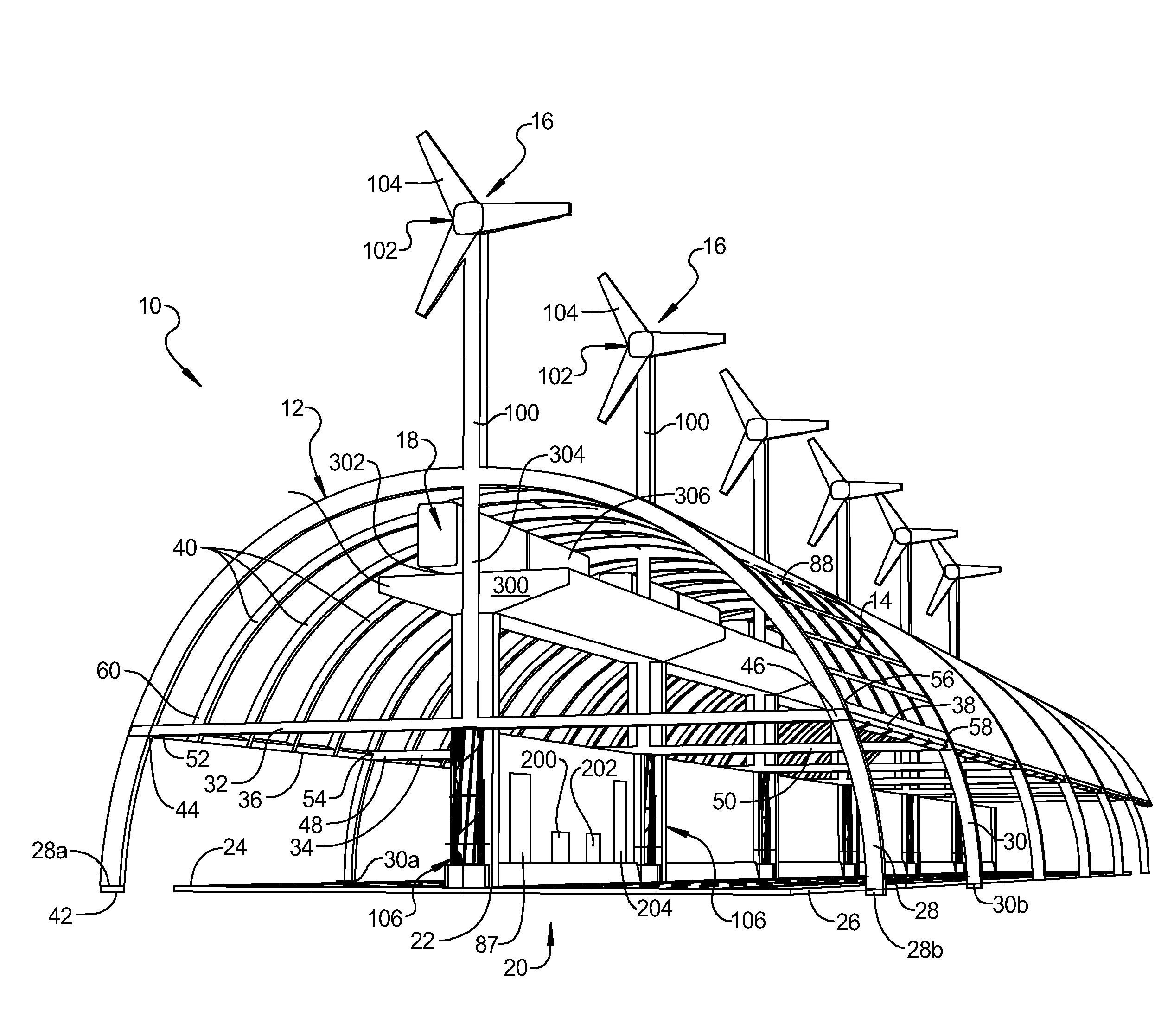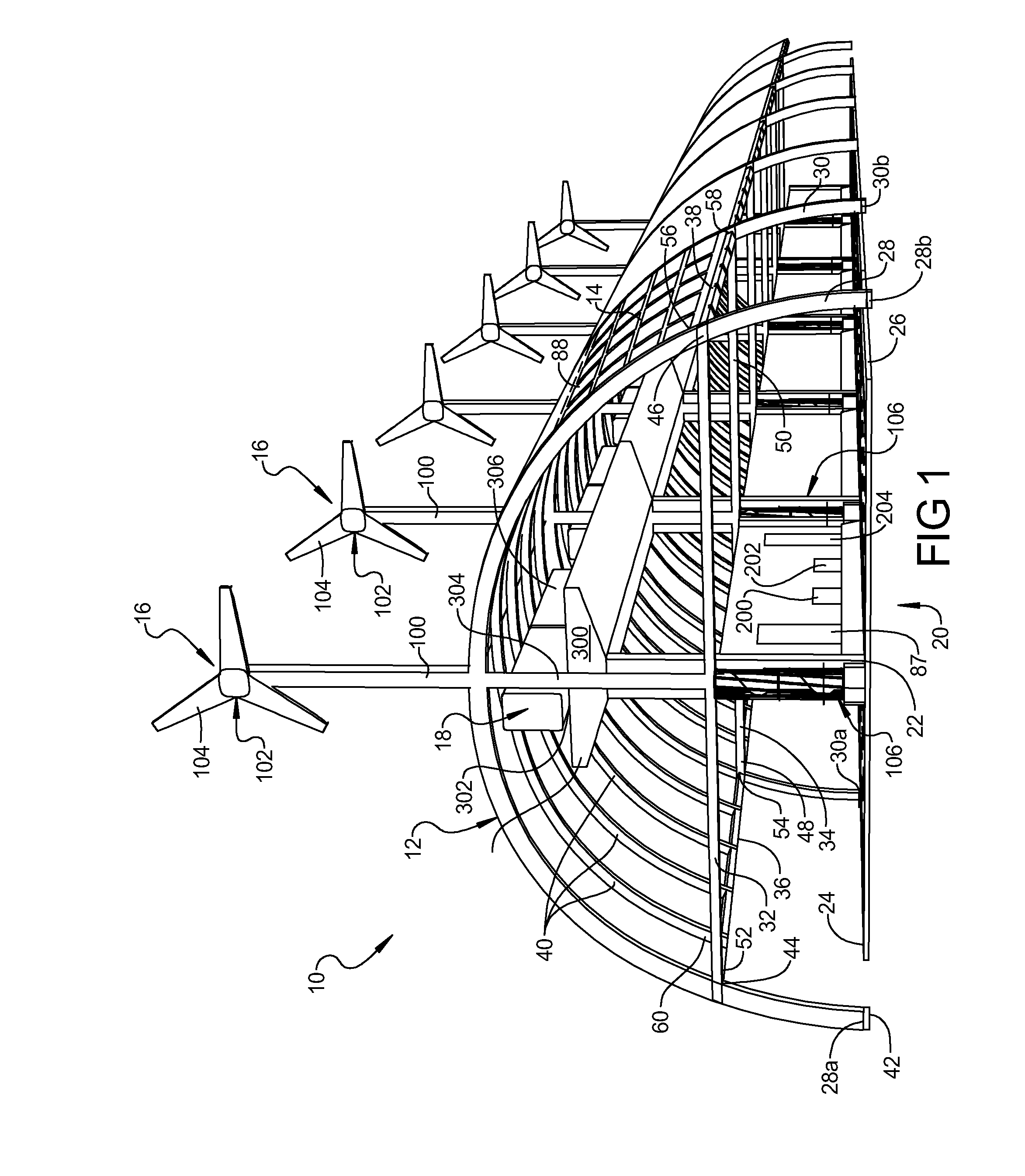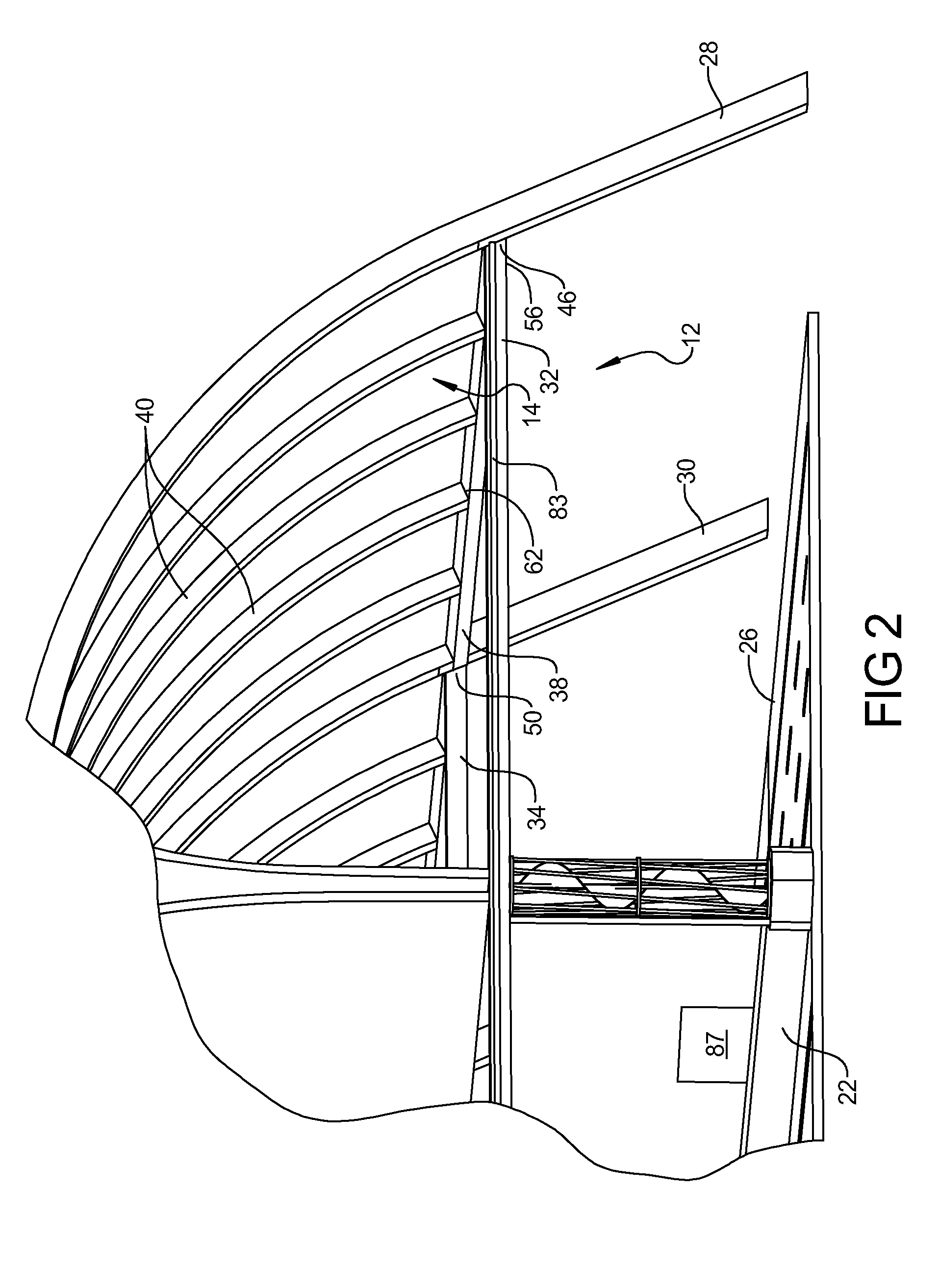Road sheltering and optimization
a shelter structure and road technology, applied in the direction of renewable energy generation, greenhouse gas reduction, roads, etc., can solve the problems of reducing contributing to global warming, and causing thousands of deaths and injuries, so as to reduce the air resistance of vehicles and maximize the energy drawn from the air. , the effect of increasing wind speed
- Summary
- Abstract
- Description
- Claims
- Application Information
AI Technical Summary
Benefits of technology
Problems solved by technology
Method used
Image
Examples
second embodiment
[0034]In a second embodiment, at least one vertical wind turbine is located in a median of the road and secured to portions of the structural support beams. At least one horizontal turbine can also be provided which extends above the cover, and which is driven by air current flowing over the cover.
third embodiment
[0035]In a third embodiment, an electrolytic cell is provided which performs electrolysis of water stored in a water storage tank filled by a drainage system which collects rain water running off of the cover.
fourth embodiment
[0036]In a fourth embodiment, an elevated rail is located near the cover on either the inside or outside of the structure.
[0037]It is to be appreciated by one having ordinary skill in the art that the described road shelter may be one of multiple identical “grid pieces” that can be connected in sequence to create a road shelter stretching many miles.
[0038]The following description of the preferred embodiment is merely exemplary in nature and is in no way intended to limit the invention, its application, or uses.
[0039]With reference to FIGS. 1 and 2 of the drawings, a road shelter constructed in accordance with the teachings of the present invention is generally identified by the reference numeral 10. The road shelter 10 includes a structural frame 12, a cover 14, elevated wind turbines 16, and an elevated rail 18. The structure 12 is designed to span over a road or highway 20 having a median 22 and road edges 24 and 26, for example a U.S. Interstate highway.
[0040]In this exemplary e...
PUM
 Login to View More
Login to View More Abstract
Description
Claims
Application Information
 Login to View More
Login to View More - R&D
- Intellectual Property
- Life Sciences
- Materials
- Tech Scout
- Unparalleled Data Quality
- Higher Quality Content
- 60% Fewer Hallucinations
Browse by: Latest US Patents, China's latest patents, Technical Efficacy Thesaurus, Application Domain, Technology Topic, Popular Technical Reports.
© 2025 PatSnap. All rights reserved.Legal|Privacy policy|Modern Slavery Act Transparency Statement|Sitemap|About US| Contact US: help@patsnap.com



